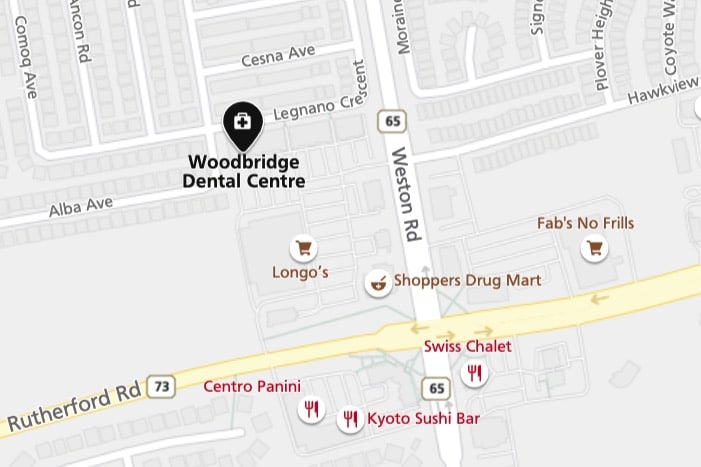Quick Links
ToggleVeneers are one of the most popular dental restorations, particularly for aesthetic reasons. Dentists use veneers to fix dental problems such as significantly discolored teeth, broken or chipped teeth, and teeth witan excessive space between them, as well as to improve the appearance of someone’s smile.
Dental veneers are a great way to fix issues with a patient’s smile brought on by minor dental issues. They are attractive, strong, and have no intrusive application process. Regarding veneer treatment, one of the more frequent inquiries dentists get is about the kind of material applied.
How can you tell if veneers are the right decision for your circumstances? Your dentist will examine the problems keeping your smile from shining to its full potential and present you with choices for restoring the appearance and functionality of your teeth when you visit.
Dental veneers are probably a good option if you have some of the above-mentioned conditions. High-quality veneers can completely remodel your smile. In this blog, we will discuss dental veneers and what materials are used to make them.
What are Dental Veneers?
A veneer in dentistry is a covering made of a substance placed over a tooth. Veneers can protect the tooth’s surface from damage and improve the aesthetics of a smile. Dental veneers are incredibly thin, tooth-colored shells placed on the front surfaces of your teeth to enhance the appearance of your smile.
The color, size, form, or length of your tooth can be altered by these personalized covers, which adhere to your teeth to cover up minor flaws. Veneers simply cover the portion of the tooth that is visible when you smile, as opposed to crowns that enclose the complete tooth.
Many cosmetic dental issues, such as chips, cracks, discoloration, or smaller-than-average teeth, can be resolved with veneers. Dentists can also use them to provide a uniform, symmetrical grin.
What Materials are Used for Dental Veneers?
Composite and dental porcelain are the main materials used to create a veneer. As the name suggests, ceramic veneers, also known as porcelain veneers, are made from specialist porcelain molded to suit your teeth in an off-site dental facility.
The very same sort of resin composite material that is used in tooth bonding is used to create composite veneers. Same-day treatment is possible as composite veneers are created on-site rather than off-site.
Porcelain Veneers
The most popular veneer is porcelain, often known as classic veneer. Each is expertly constructed to fit one other and is made of porcelain. The application method is one of the most obvious distinctions between porcelain and composite veneers.
A tiny bit of enamel is removed to apply porcelain veneers, a more intrusive procedure. The veneers are meant to be permanent because the enamel is removed. The good news is that porcelain veneers are more resilient and, with proper maintenance, can last for more than ten years.
It is challenging to distinguish them from your other teeth because the material blends well with the color and shape of your permanent teeth. Porcelain veneers are the best option to improve your smile’s appearance instantly. They are cutting-edge dental procedures made of incredibly thin ceramic porcelain. This veneer is bonded directly to the enamel on the front of your natural teeth.
Many people get porcelain veneers for reasons other than simply wanting a more attractive smile. Porcelain veneers are an excellent option for someone who needs to fix a chipped or broken tooth brought on by various factors.
Composite Veneers
With composite veneers, teeth can be made to look better using tooth-colored resin. As some may not be aware, resin is a kind of plastic. Many people use composite veneers to improve the appearance of their smile, correct misalignments, and conceal broken teeth.
In contrast to porcelain veneers, the resin is applied directly to the tooth, which then molds and sculpts it to obtain the desired appearance. Moreover, the composite veneers’ application process is less intrusive than porcelain veneers.
Similar to the substance used to complete a tooth-colored filling, composite bonding is used in this process. Your smile will look better and be more uniform, thanks to the expert molding and shaping of the cosmetic dentist. These veneers have a lifespan of two to five years, are made of a less expensive substance than porcelain, and are molded freehand straight onto the teeth.
Porcelain or composite – Difference
There are considerable differences between these two materials. The following are some salient characteristics of ceramic and composite veneers:
- Appearance
Both ceramic and composite veneers look great since they are comprised of tooth-colored materials. The majority of dentists believe that porcelain veneers provide a more natural-looking outcome. They have a transparent appearance that resembles tooth enamel quite a bit.
- Stain Resistance
Ceramic veneers are exceptionally stain-resistant because of their fine surface texture. On the other hand, when you consume a lot of colored meals, composite veneers may stain slightly.
- Time Difference
The time needed to apply each type of veneer varies. Without a doubt, composite veneers are the quicker option. On the other hand, porcelain veneers frequently need two to three visits. To ensure the procedure is carried out correctly, the dentist must take many more steps.
- The Durability of Veneers
Although the more expensive alternative to veneers, porcelain veneers last much longer than composite veneers. However, how well you care for your veneers will determine how long they endure. Nonetheless, composite veneers normally last between two and five years, while porcelain veneers typically last between ten to fifteen.
A crucial point to remember is that porcelain veneers cannot be restored if they are damaged or cracked; they must be replaced. The situation with composite veneers is different.
How to Take Care of Dental Veneers
Whether you select composite or porcelain veneers, take care of them to extend their lifespan.
- Maintain a Good Oral Hygiene Routine
Continue brushing your teeth twice daily and using floss or another interdental tool to clean in between your teeth every day. Ask your dentist to demonstrate the optimum brushing and flossing techniques for you to use with your new veneers.
- Use the Proper Toothbrush and Toothpaste
Clean your veneers with a gentle bristle and nonabrasive toothpaste. It requires avoiding substances that can erode at the surface of your veneers, such as hydrogen peroxide, sodium bicarbonate, or baking soda. Your dentist might suggest the greatest products to use.
- Avoid Biting into Hard Objects
You should use caution when eating harder items like raw fruits and vegetables, chips, or bone-in meat. You must also stop bad habits like biting on ice or prying items open with your teeth.
Choose Woodbridge Dental Care for Dental Veneers
When picking the best material, you must be well-informed about your alternatives, as veneers are a major commitment that can significantly alter your smile. You may find out if you’re a good candidate for veneers by consulting with your dentist thoroughly, and then you can prepare to flaunt your new smile to the world.
At WoodBridge Dental Care, we aim to give the families in Woodbridge and the surrounding areas the top-notch dental treatment they need. Everyone ought to smile confidently, and Dr. Wesley Creamer is the first step toward a lifetime of healthy, cheerful smiles.
Thanks to our broad selection of preventative, restorative, and general dental services, you will have access to all the high-quality treatment you require under one roof at Woodbridge Dental Care. The staff at Woodbridge Dental Care has a solution for you whether you need immediate dental treatment, a root canal, or a cosmetic operation that meets your needs.
Visit our website to see the full range of services and solutions we provide, and be sure to set up your next appointment right away.






